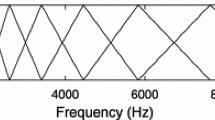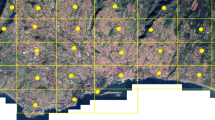Abstract
Advancements in sensor technology and processing power have made it possible to create recording equipment that can reconstruct the audio signal of insects passing through a directed infrared beam. The widespread deployment of such devices would allow for a range of applications previously not practical. A sensor net of detectors could be used to help model population dynamics, assess the efficiency of interventions and serve as an early warning system. At the core of any such system is a classification problem: given a segment of audio collected as something passes through a sensor, can we classify it? We examine the case of detecting the presence of fly species, with a particular focus on mosquitoes. This gives rise to a range of problems such as: can we discriminate between species of fly? Can we detect different species of mosquito? Can we detect the sex of the insect? Automated classification would significantly improve the effectiveness and efficiency of vector monitoring using these sensor nets. We assess a range of time series classification (TSC) algorithms on data from two projects working in this area. We assess our prior belief that spectral features are most effective, and we remark on all approaches with respect to whether they can be considered “real-time”.
Access this chapter
Tax calculation will be finalised at checkout
Purchases are for personal use only
Similar content being viewed by others
References
Chadwick, L.E.: A simple stroboscopic method for the study of insect flight. Psyche 46(1), 1–8 (1939)
Chen, Y., Why, A., Batista, G., Mafra-Neto, A., Keogh, E.: Flying insect classification with inexpensive sensors. J. Insect Behav. 27(5), 657–677 (2014)
Deng, H., Runger, G., Tuv, E., Vladimir, M.: A time series forest for classification and feature extraction. Inf. Sci. 239, 142–153 (2013)
Greven, H., Kaya, M., Junker, K., Akyuz, L., Amemiya, C.T.: Characterization of tongue worm (pentastomida) chitin supports \(\alpha \)-rather than \(\beta \)-chitin. Zoologischer Anzeiger 279, 111–115 (2019)
Large, J., Lines, J., Bagnall, A.: A probabilistic classifier ensemble weighting scheme based on cross-validated accuracy estimates. Data Min. Knowl. Discov., 1–36 (2019)
Li, Z., Zhou, Z., Shen, Z., Yao, Q.: Automated identification of mosquito (diptera: culicidae) wingbeat waveform by artificial neural network. In: Li, D., Wang, B. (eds.) AIAI 2005. ITIFIP, vol. 187, pp. 483–489. Springer, Boston, MA (2005). https://doi.org/10.1007/0-387-29295-0_52
Lines, J., Taylor, S., Bagnall, A.: Time series classification with HIVE-COTE: the hierarchical vote collective of transformation-based ensembles. ACM Trans. Knowl. Discov. Data 12(5), 1041–1046 (2018)
Lines, J., Davis, L.M., Hills, J., Bagnall, A.: A shapelet transform for time series classification. In: Proceedings of the 18th ACM SIGKDD International Conference on Knowledge Discovery and Data Mining, pp. 289–297. ACM (2012)
Moore, A.: Development of a data acquisition system for long-term outdoor recording of insect flight activity using a photosensor. In: 13th Conference on Aerobiology and Biometeorology, American Meteorological Society, Albuquerque, New Mexico (1998)
Moore, A., Miller, J.R., Tabashnik, B.E., Gage, S.H.: Automated identification of flying insects by analysis of wingbeat frequencies. J. Econ. Entomol. 79(6), 1703–1706 (1986)
Moore, A., Miller, R.H.: Automated identification of optically sensed aphid (homoptera: Aphidae) wingbeat waveforms. Ann. Entomol. Soc. Am. 95(1), 1–8 (2002)
Potamitis, I.: Classifying insects on the fly. Ecol. Inform. 21, 40–49 (2014)
Potamitis, I., Rigakis, I.: Novel noise-robust optoacoustic sensors to identify insects through wingbeats. IEEE Sens. J. 15(8), 4621–4631 (2015)
Potamitis, I., Rigakis, I.: Large aperture optoelectronic devices to record and time-stamp insects’ wingbeats. IEEE Sens. J. 16(15), 6053–6061 (2016)
Reed, S., Williams, C., Chadwick, L.: Frequency of wing-beat as a character for separating species races and geographic varieties of drosophila. Genetics 27(3), 349 (1942)
Sarpola, M., et al.: An aquatic insect imaging system to automate insect classification. Trans. ASABE 51(6), 2217–2225 (2008)
Schäfer, P.: Bag-of-SFA-Symbols in Vector Space (BOSS VS) (2015)
Unwin, D., Ellington, C.: An optical tachometer for measurement of the wing-beat frequency of free-flying insects. J. Exp. Biol. 82(1), 377–378 (1979)
Wen, C., Guyer, D.: Image-based orchard insect automated identification and classification method. Comput. Electron. Agric. 89, 110–115 (2012)
Zhang, C., Wang, P., Guo, H., Fan, G., Chen, K., Kämäräinen, J.K.: Turning wingbeat sounds into spectrum images for acoustic insect classification. Electron. Lett. 53(25), 1674–1676 (2017)
Acknowledgements
This work is supported by the Biotechnology and Biological Sciences Research Council [grant number BB/M011216/1], and the UK Engineering and Physical Sciences Research Council (EPSRC) [grant number EP/M015807/1]. The experiments were carried out on the High Performance Computing Cluster supported by the Research and Specialist Computing Support service at the University of East Anglia and using a Titan X Pascal donated by the NVIDIA Corporation.
Author information
Authors and Affiliations
Corresponding author
Editor information
Editors and Affiliations
Rights and permissions
Copyright information
© 2019 Springer Nature Switzerland AG
About this paper
Cite this paper
Flynn, M., Bagnall, A. (2019). Classifying Flies Based on Reconstructed Audio Signals. In: Yin, H., Camacho, D., Tino, P., Tallón-Ballesteros, A., Menezes, R., Allmendinger, R. (eds) Intelligent Data Engineering and Automated Learning – IDEAL 2019. IDEAL 2019. Lecture Notes in Computer Science(), vol 11872. Springer, Cham. https://doi.org/10.1007/978-3-030-33617-2_26
Download citation
DOI: https://doi.org/10.1007/978-3-030-33617-2_26
Published:
Publisher Name: Springer, Cham
Print ISBN: 978-3-030-33616-5
Online ISBN: 978-3-030-33617-2
eBook Packages: Computer ScienceComputer Science (R0)




